Olive oil cleaning hack: sounds too good to be true, right? I thought so too, until I tried it! Forget harsh chemicals and expensive cleaners; you probably have the secret to a sparkling home sitting right in your pantry. For centuries, olive oil has been treasured not just for its culinary uses, but also for its incredible properties. Think back to ancient civilizations – they used olive oil for everything from skincare to lamp fuel. Now, we’re rediscovering its magic in a whole new way: as a powerful, natural cleaner.
Let’s be honest, who *enjoys* spending hours scrubbing and polishing? We all crave a clean and tidy home, but the process can be tedious and time-consuming. That’s where this olive oil cleaning hack comes in. I’m going to show you how to use this everyday ingredient to tackle everything from dull furniture to sticky residue, saving you time, money, and a whole lot of elbow grease. Get ready to be amazed by the versatility and effectiveness of this simple, all-natural solution. Trust me, once you try it, you’ll wonder how you ever cleaned without it!
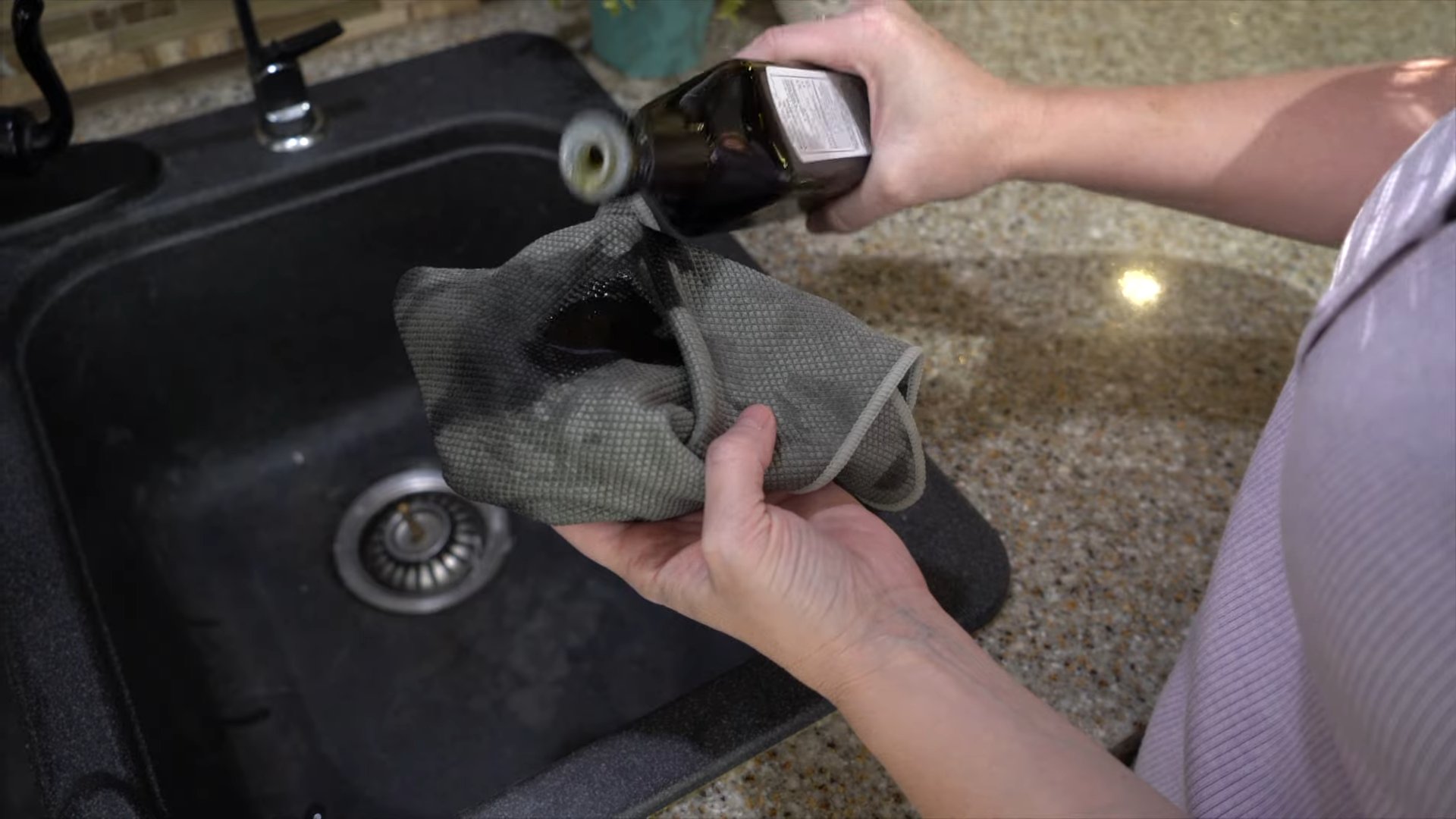
Growing Watermelons: A Beginner’s Guide to Backyard Success
So, you want to grow watermelons in your backyard? Awesome! It’s totally doable, and there’s nothing quite like biting into a juicy, homegrown watermelon on a hot summer day. I’ve been growing them for years, and while there’s a bit of a learning curve, it’s incredibly rewarding. This guide will walk you through everything you need to know, from choosing the right variety to harvesting your prize-winning melon.
Choosing the Right Watermelon Variety
First things first, let’s talk about watermelon varieties. Not all watermelons are created equal, and some are better suited for smaller gardens than others. Here’s a breakdown to help you decide:
* Sugar Baby: This is a classic choice for beginners. It’s a smaller melon (around 8-10 pounds), matures quickly (around 75 days), and is known for its sweetness. Perfect if you don’t have a ton of space!
* Crimson Sweet: A popular, widely available variety. It’s larger than Sugar Baby (around 20-25 pounds) and takes a bit longer to mature (around 85 days), but the flavor is fantastic.
* Jubilee: These are the big boys! Jubilee watermelons can weigh up to 30-40 pounds and take around 90-100 days to mature. They need plenty of space and are best suited for experienced gardeners.
* Bush Sugar Baby: If you’re *really* short on space, consider this bush variety. It produces smaller melons on compact vines, making it ideal for container gardening.
* Yellow/Orange Watermelons: Don’t be afraid to try something different! Varieties like ‘Yellow Doll’ or ‘Orange Tendersweet’ offer a unique flavor and color.
Key Considerations:
* Growing Season Length: Make sure the variety you choose has a maturity date that fits within your growing season.
* Available Space: Watermelons need room to sprawl. Consider the size of your garden and choose a variety accordingly.
* Personal Preference: Do you prefer a smaller, sweeter melon or a larger, more flavorful one?
Preparing Your Garden Bed
Watermelons are heavy feeders, meaning they need nutrient-rich soil to thrive. Proper soil preparation is crucial for a successful harvest.
1. Choose a Sunny Location: Watermelons need at least 6-8 hours of direct sunlight per day. Pick a spot in your garden that gets plenty of sun.
2. Test Your Soil: A soil test will tell you the pH level and nutrient content of your soil. Watermelons prefer a slightly acidic soil (pH 6.0-6.8). You can purchase a soil test kit at most garden centers.
3. Amend the Soil: Based on your soil test results, amend the soil with compost, aged manure, or other organic matter. This will improve drainage, aeration, and nutrient content. I usually add a generous amount of compost – the more, the merrier!
4. Create Mounds or Rows: Watermelons grow best on raised mounds or rows. This helps with drainage and warms the soil faster. Create mounds that are about 12 inches high and 3-4 feet apart. If you’re using rows, space them about 6-8 feet apart.
5. Consider Black Plastic Mulch: Laying down black plastic mulch can help warm the soil, suppress weeds, and retain moisture. It’s especially helpful in cooler climates.
Planting Your Watermelon Seeds or Seedlings
You can start watermelon seeds indoors or direct sow them in the garden. I prefer starting them indoors to get a head start, especially in areas with shorter growing seasons.
Starting Seeds Indoors (Optional)
1. Start Seeds 4-6 Weeks Before Last Frost: Sow seeds in peat pots or seedling trays filled with seed-starting mix.
2. Plant Seeds ½ Inch Deep: Place 2-3 seeds in each pot or cell.
3. Keep Soil Moist and Warm: Water gently and keep the soil consistently moist but not soggy. Use a heat mat to maintain a soil temperature of 80-85°F (27-29°C).
4. Provide Plenty of Light: Once seedlings emerge, provide them with plenty of light. A grow light is ideal, but a sunny windowsill can also work.
5. Harden Off Seedlings: Before transplanting seedlings outdoors, gradually acclimate them to outdoor conditions. This process, called hardening off, involves exposing them to increasing amounts of sunlight and wind over a period of 7-10 days.
Direct Sowing Seeds
1. Wait Until Soil is Warm: Watermelons need warm soil to germinate. Wait until the soil temperature reaches at least 70°F (21°C) before direct sowing seeds.
2. Plant Seeds ½ Inch Deep: Sow 4-5 seeds per mound or row.
3. Thin Seedlings: Once seedlings emerge, thin them to the strongest plant per mound or row.
Transplanting Seedlings
1. Choose a Cloudy Day: Transplant seedlings on a cloudy day to minimize stress.
2. Dig a Hole: Dig a hole that is slightly larger than the root ball of the seedling.
3. Gently Remove Seedling: Carefully remove the seedling from its pot, being careful not to damage the roots.
4. Place Seedling in Hole: Place the seedling in the hole and backfill with soil.
5. Water Thoroughly: Water the seedling thoroughly to help it establish.
6. Space Plants Properly: Space plants according to the variety’s recommendations. Generally, allow 3-4 feet between plants in a row and 6-8 feet between rows.
Caring for Your Watermelon Plants
Once your watermelon plants are in the ground, it’s important to provide them with proper care to ensure a bountiful harvest.
1. Water Regularly: Watermelons need consistent moisture, especially during fruit development. Water deeply and regularly, aiming for about 1-2 inches of water per week. Avoid overhead watering, as this can promote fungal diseases. Drip irrigation is ideal.
2. Fertilize Regularly: Watermelons are heavy feeders and need regular fertilization. Use a balanced fertilizer (e.g., 10-10-10) every 2-3 weeks. Once the fruits start to develop, switch to a fertilizer that is higher in phosphorus and potassium (e.g., 5-10-10) to promote fruit growth. I like to use a liquid seaweed fertilizer as a foliar spray every couple of weeks too.
3. Weed Control: Keep the area around your watermelon plants free of weeds. Weeds compete with watermelons for nutrients and water. Mulching can help suppress weeds.
4. Vine Training (Optional): Watermelon vines can sprawl quite a bit. If you’re short on space, you can train the vines to grow in a specific direction. Use stakes or trellises to support the vines.
5. Pollination: Watermelons need to be pollinated to produce fruit. Bees are the primary pollinators. If you don’t have many bees in your area, you may need to hand-pollinate the flowers. To hand-pollinate, use a small paintbrush to transfer pollen from the male flowers to the female flowers. Female flowers have a small, immature watermelon at the base of the flower.
6. Protect from Pests and Diseases: Watermelons are susceptible to various pests and diseases, including aphids, squash bugs, vine borers, and fungal diseases. Inspect your plants regularly for signs of pests or diseases. Use organic pest control methods, such as insecticidal soap or neem oil, to control pests. Prevent fungal diseases by providing good air circulation and avoiding overhead watering.
Harvesting Your Watermelons
Knowing when to harvest your watermelons is crucial for getting that perfect, juicy flavor. Here are a few indicators to look for:
1. Days to Maturity: Check the seed packet or plant tag for the variety’s days to maturity. This is a good starting point, but it’s not always accurate.
2. Tendril Test: The tendril closest to the fruit stem should be brown and dry. This is a reliable indicator of ripeness.
3. Ground Spot: The spot where the watermelon rests on the ground (the ground spot) should be yellow or creamy yellow. If it’s still white, the watermelon is not ripe.
4. Thumping Test: This is the most subjective test, but it can be helpful. A ripe watermelon will have a deep, hollow sound when thumped. An unripe watermelon will sound dull or flat.
5. Rind Appearance: The rind should be dull and waxy, not shiny.
Harvesting Tips:
*
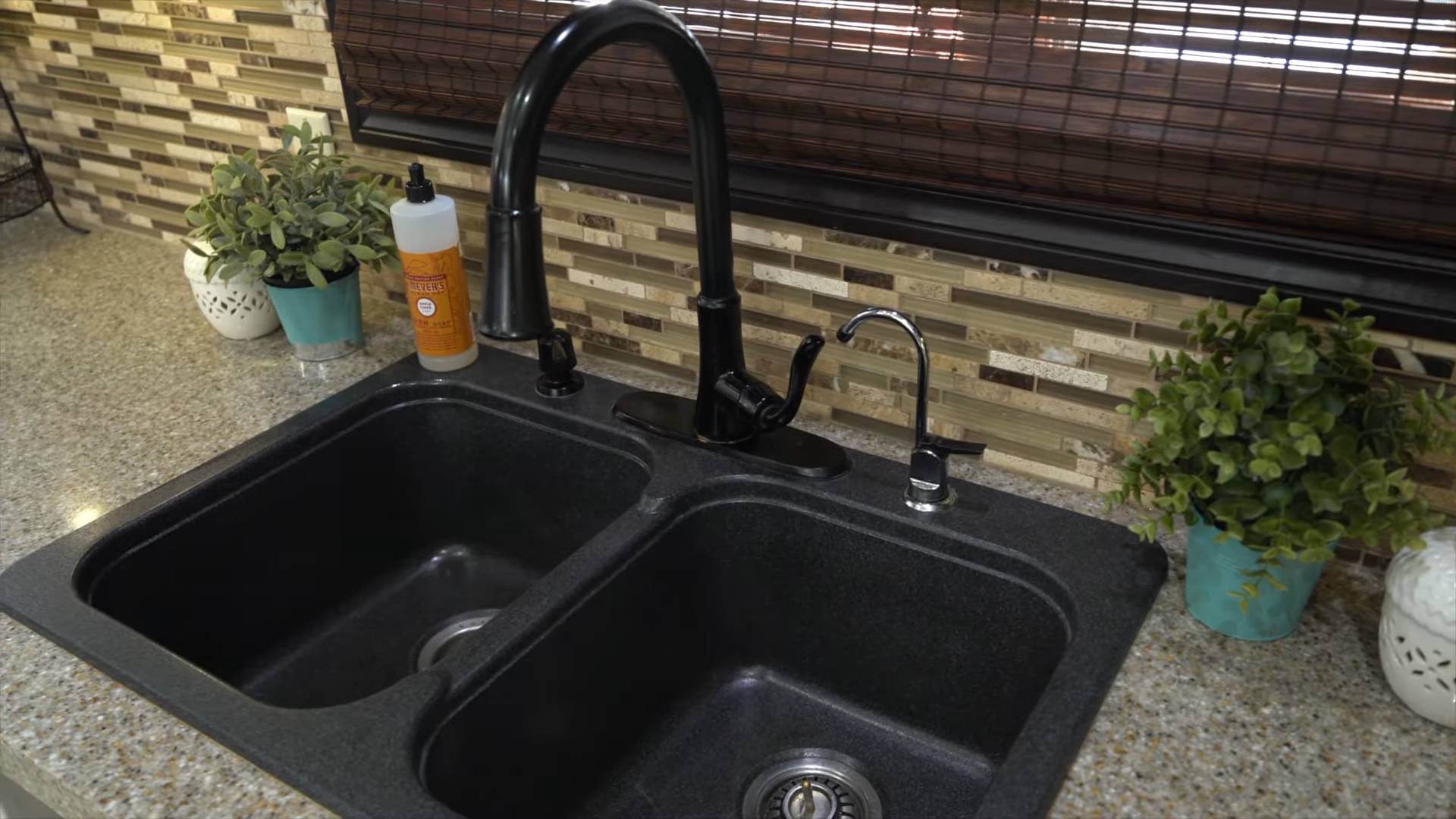
Conclusion
So, there you have it! This simple, yet remarkably effective, olive oil cleaning hack is a game-changer for anyone looking to achieve a sparkling clean home without resorting to harsh chemicals or expensive cleaning products. We’ve explored how this age-old ingredient, readily available in most kitchens, can be transformed into a powerful cleaning agent, capable of tackling everything from stubborn grease to restoring the luster of your wooden furniture.
Why is this a must-try? Because it’s economical, eco-friendly, and incredibly versatile. Think about it: you’re likely already buying olive oil for cooking. Now, you can leverage its natural properties to clean and polish, reducing your reliance on multiple specialized cleaning products. This not only saves you money but also minimizes the number of chemicals you introduce into your home environment. For those with sensitivities or allergies, this is a particularly compelling reason to embrace this natural alternative.
But the benefits don’t stop there. The gentle nature of olive oil means it’s less likely to damage delicate surfaces compared to abrasive cleaners. It nourishes wood, leaving it with a beautiful, healthy sheen, and it can even help to protect metal surfaces from rust. It’s a win-win situation!
Looking for variations? Absolutely! Consider adding a few drops of your favorite essential oil to the olive oil mixture for a pleasant scent. Lemon, lavender, and tea tree oil are all excellent choices, each offering its own unique cleaning and aromatherapy benefits. For tougher cleaning jobs, you can also experiment with adding a small amount of white vinegar to the olive oil solution. The acidity of the vinegar will help to cut through grease and grime, while the olive oil will provide a protective layer. Another variation is to infuse the olive oil with herbs like rosemary or thyme for a more potent and fragrant cleaning solution. Simply warm the olive oil gently with the herbs for a few hours, then strain and use as directed.
We understand that trying something new can sometimes feel daunting, but we urge you to give this olive oil cleaning hack a try. The results speak for themselves, and we’re confident that you’ll be amazed by the cleaning power of this humble ingredient.
Don’t just take our word for it! Experiment with different ratios and variations to find what works best for you and your home. Once you’ve discovered your perfect olive oil cleaning solution, we encourage you to share your experience with us and the wider community. Let us know what surfaces you’ve cleaned, what variations you’ve tried, and what results you’ve achieved. Your feedback will help others discover the magic of this natural cleaning method and contribute to a cleaner, healthier planet.
So, ditch the harsh chemicals and embrace the power of olive oil. Your home – and your health – will thank you for it!
Frequently Asked Questions (FAQ)
What types of olive oil are best for cleaning?
While extra virgin olive oil is often preferred for cooking due to its superior flavor and health benefits, you don’t need to use the most expensive variety for cleaning. Regular olive oil or even light olive oil will work just as well. The key is to choose a pure olive oil without any added ingredients or fragrances. Using lower grades of olive oil for cleaning purposes can also be a cost-effective way to utilize olive oil that might not be ideal for culinary applications.
Can I use olive oil to clean all surfaces?
While olive oil is generally safe for most surfaces, it’s always a good idea to test it in an inconspicuous area first, especially on delicate or porous materials. Avoid using olive oil on unsealed stone surfaces, as it can potentially stain. It’s also not recommended for cleaning electronics, as the oil can seep into crevices and cause damage. Surfaces like glass might require an additional wipe with a clean, dry cloth to remove any residual oil and prevent streaks.
How do I prevent olive oil from leaving a greasy residue?
The key to preventing a greasy residue is to use olive oil sparingly and to thoroughly wipe the surface with a clean, dry cloth after cleaning. You can also dilute the olive oil with water or vinegar to reduce its concentration. Another helpful tip is to use a microfiber cloth, which is excellent at absorbing excess oil and leaving a streak-free finish. If you do notice a slight residue, simply wipe the surface again with a clean, damp cloth.
How often should I use olive oil to clean my furniture?
The frequency of cleaning with olive oil will depend on the type of furniture and how often it’s used. For wooden furniture, a monthly cleaning is usually sufficient to maintain its luster and protect it from drying out. For surfaces that are frequently exposed to dirt or grease, such as kitchen cabinets, you may need to clean them more often. Always assess the condition of the furniture and adjust the cleaning frequency accordingly.
Can I use olive oil to remove sticky residue from labels or stickers?
Yes, olive oil is an excellent natural solution for removing sticky residue. Simply apply a generous amount of olive oil to the residue, let it sit for a few minutes to soften the adhesive, and then gently wipe it away with a cloth. For stubborn residue, you may need to repeat the process or use a slightly abrasive cloth. After removing the residue, clean the surface with soap and water to remove any remaining oil.
Is olive oil safe for cleaning around pets and children?
Yes, olive oil is a safe and non-toxic cleaning option for homes with pets and children. Unlike many commercial cleaning products that contain harsh chemicals, olive oil is a natural ingredient that poses no risk of ingestion or skin irritation. However, it’s always a good idea to keep pets and children away from the area while you’re cleaning to prevent them from slipping on oily surfaces.
How should I store my homemade olive oil cleaning solution?
Store your homemade olive oil cleaning solution in a clean, airtight container in a cool, dark place. This will help to prevent the oil from going rancid and maintain its cleaning effectiveness. You can use a glass spray bottle for easy application. Be sure to label the container clearly to avoid any confusion. The solution should last for several months if stored properly.
Can I add other ingredients to my olive oil cleaning solution?
Absolutely! As mentioned earlier, you can add essential oils for fragrance and added cleaning benefits. Lemon juice or white vinegar can be added to boost the cleaning power, especially for tackling grease and grime. A small amount of baking soda can also be added to create a gentle abrasive cleaner for removing stubborn stains. Experiment with different combinations to find what works best for your specific cleaning needs. Always test any new mixture in an inconspicuous area first to ensure it doesn’t damage the surface.

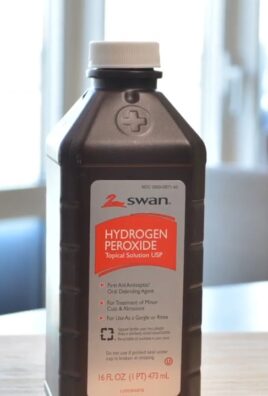
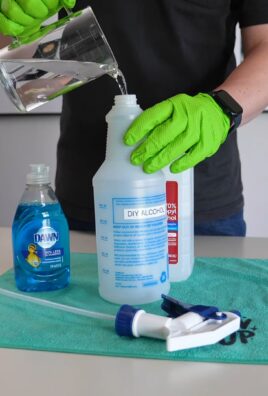
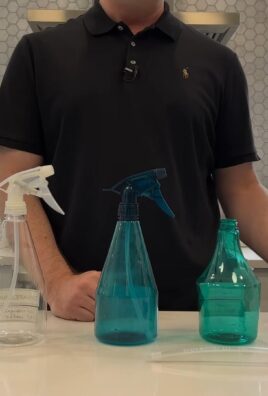
Leave a Comment